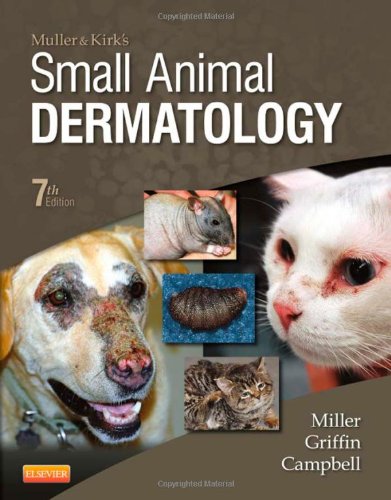Faculty authors top textbook on pet skin
When students of Cornell dermatologist Dr. William Miller say he wrote the book on small animal dermatology, they aren’t exaggerating.
 As Medical Director at Cornell University’s Companion Animal Hospital, Miller shares his expertise to benefit students, patients, and owners alike. Now, as first author of the newly released edition of his field’s seminal text, he has expanded his impact to reach students and professionals around the world.
As Medical Director at Cornell University’s Companion Animal Hospital, Miller shares his expertise to benefit students, patients, and owners alike. Now, as first author of the newly released edition of his field’s seminal text, he has expanded his impact to reach students and professionals around the world.
Covering diagnosis and treatment for hundreds of skin conditions and parasites, Muller and Kirk's Small Animal Dermatology, 7th Edition is considered the leading dermatology reference covering dogs, cats, and small exotic pets. It covers clinical signs, etiology, and pathogenesis of dermatologic conditions including fungal, parasitic, metabolic, nutritional, environmental, immunogenic, and psychogenic problems.
“This textbook will help students and clinicians distinguish between normal and abnormal skin characteristics and variations, make accurate diagnoses, and prescribe effective therapies,” said Miller. “I enjoyed working on a book with such a rich Cornell history behind it, and one that many people in the field will use to gain knowledge and guide decisions that help small animals avoid, manage, and recover from a spectrum of skin diseases.”
The book’s namesakes include a former Cornell hospital director, the late Dr. Robert Kirk DVM ’46, who co-wrote its first edition in the late 1960s. One of Kirk’s students, Dr. Danny W. Scott, who is a current professor of medicine at Cornell’s College of Veterinary Medicine, led several subsequent editions, sharing authorship with Miller in the fifth and sixth. In the seventh the baton was fully passed to Miller.
This new edition includes full updates of all 21 chapters and new sections on holistic treatment of dermatologic diseases and problem-based differential diagnoses illustrated in helpful flow charts. The book’s updated classifications of diseases include explanations for why those diseases that changed categories have been reclassified.
The basics of structure and function in dermatology show in several updated summary tables, and a new table summarizes adverse drug reactions all in one place. More than 1,300 high-quality clinical, microscopic, and histopathologic images color the text.
Veterinary experts Drs. Craig Griffin ’97 from San Diego University and Karen Campbell from University of Illinois also co-authored the book.




